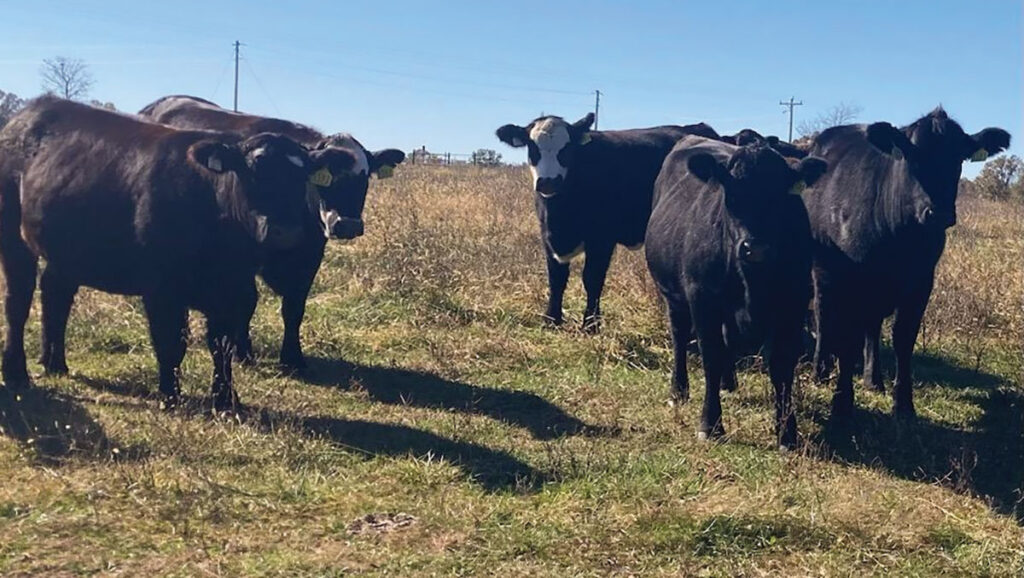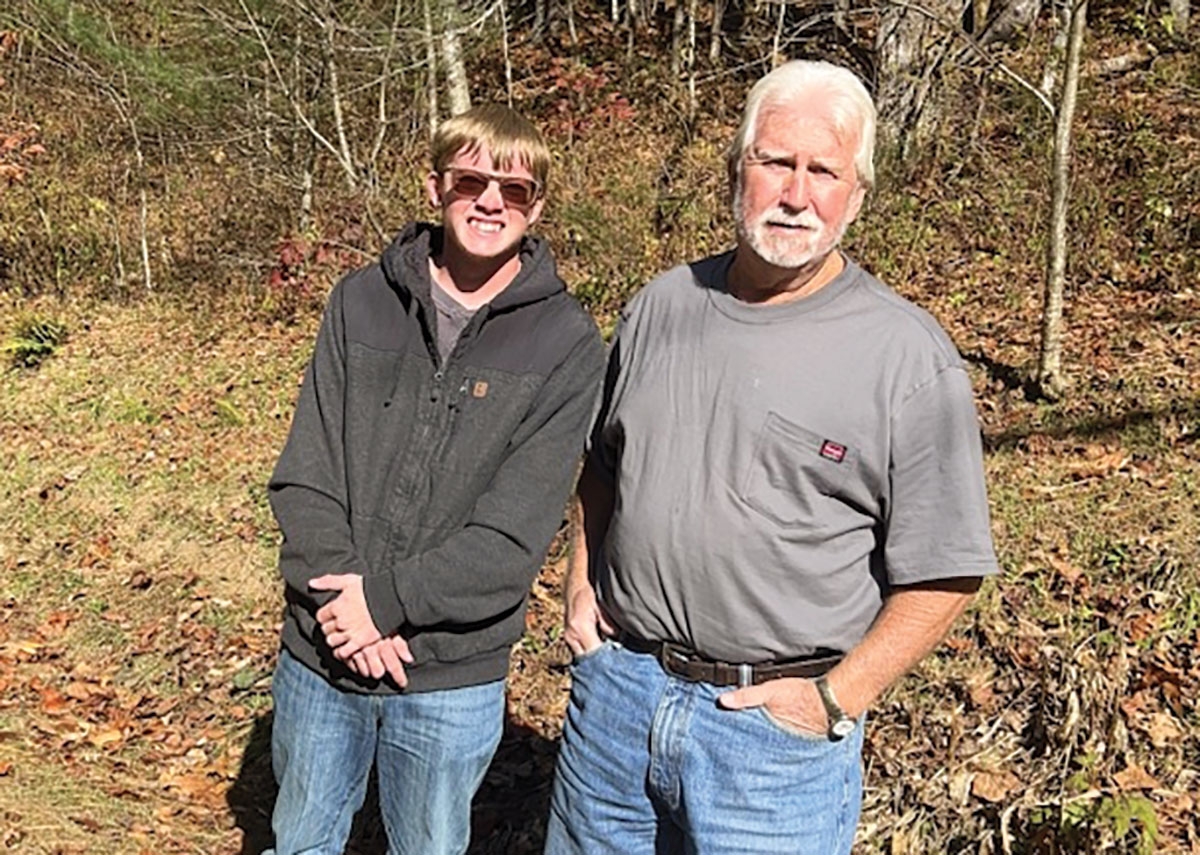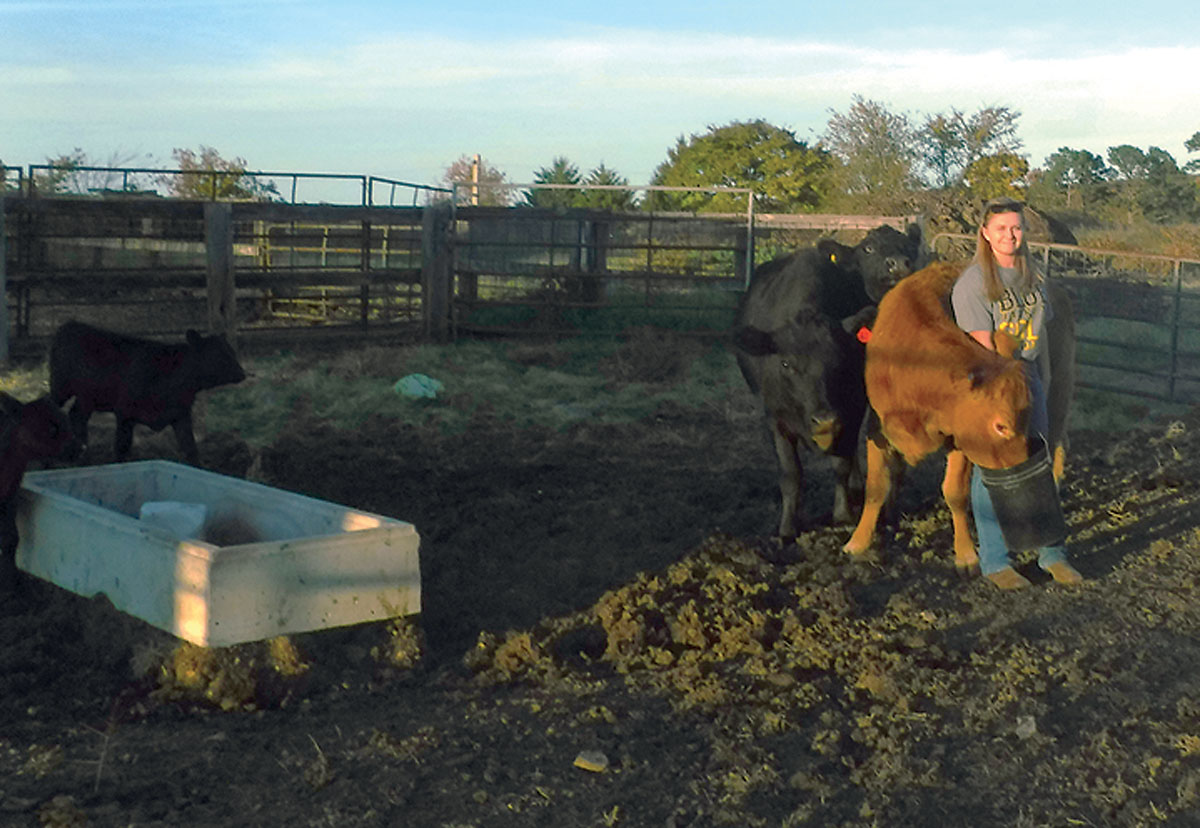
The Stories have a mixed bag of breeds, and utilize various marketing strategies
CONWAY, MO. – Kenny and Skyler Storie of Conway, Mo., are running a double cattle operation on 600-acres.
Kenny has black baldies, Black Herefords and Beefmaster-cross cattle, while his son, Skyler, raises registered horned and polled Herefords. Together, their cattle number reaches 250 to 275 head.
For the past 47 years, Kenny has also owned a concrete construction business. Skyler primarily takes care of the farming operation.
“I spend evenings and Saturdays working on the farm,” Kenny said with a laugh. “I have an excellent concrete crew, and between the business and the cattle and with the help of the whole family, we stay busy every night until dark. One person just can’t do it all.”
Cattle are maintained in separate herds, one for the Herefords, the other for the black-hided cattle.
“Dad does use some of the Hereford bulls, both polled and horned, on his cows,” Skyler explained. “He also uses Black Hereford bulls, Beefmaster, F-1 and black baldie bulls.”
Kenny and his wife Melissa grew up in farming families, between extended family and neighbors both in the Niangua/Webster County area and Conway in Laclede County.
“For years, we had no horns on the place, but from the time he was little, Skyler knew exactly what he wanted,” Melissa explained. “He started out raising chickens, but then he wanted horned cattle, and he got a horned cow from our vet. From there, he got acquainted with a couple of other cattle producers who had horned cattle. I think of horned cattle as more of a Western thing, while the polled breeds have been more popular around here in the Midwest.”
“I got my first horned bull when I was 10,” Skyler added. “I always liked watching the old Westerns on TV, and I fell in love with those Texas Longhorns and the horned Herefords. My grandpa, Jim Storie, always had Herefords, and I had heifers by the time I was 15. I’ve had a couple of Longhorns, Corriente and Watusis, in addition to my Herefords.”
Kenny and Skyler continue to evolve their farming operation, utilizing their farm’s mixed bag of genetics to optimize their potential, and the marketability of their calves.
“Every year, we try something new,” Kenny said. “This year, we have 20 black baldie-bred heifers that are three-quarters Angus and a quarter Beefmaster that we are sending to the Show Me Select Heifer Sale. These are home-raised heifers from out of sires from some of the top herds in the U.S. After years of breeding, we have a 97 percent breed back in the first 45 days, and all the cows weigh at least 1,500 pounds. We started earlier in the year with 49 heifers, and we are sending 20 to this sale.”

“Heifers have been selling cheaper than steers the last few years but selling higher at this sale,” Skyler added. “We were already doing all of the things required, so we thought we’d give it a try this year. This is the first year we’ve done any AI on any of our heifers, but we did AI on the heifers for this sale.”
The family has also utilized other programs to help get top-dollar for their calves.
“I’ve been using MFA’s Health Track program since 1999,” Kenny explained. “We wean our calves 60 days before we sell them; I won’t sell a green calf. It has really paid off, and we have hardly any shrinkage, which is 6 to 10 percent on average. Ours is only 1.75 percent. We have 170 calves in the lot right now, ready for sale.”
This program requires the producer to report the birthdate of the first calf born for the year, the date the calves were weaned, vaccinations given, and dates administered. Source and age requirements include that the producer-owned all the cows at the time of the calves’ birth.
“In addition, we use trace mineral blocks and No. 2 salt licks. We use Ricochet with fly control year-round. At calving time, we also use Bio Moss tubs, which keeps the calves from getting the scours,” Skyler said. “Our other heifers are going to a special wean-vac sale they have each year at the Joplin Stockyards in early November. We retain 10 to 40 of our heifers each year, depending on what we need. This year, we are keeping 50 of them.”
Their farm is truly a full-family operation.
“My dad (John Shaddy), helps us by putting up hay,” Melissa explained. “He’s a great right hand. He, Skyler, and Kenny’s nephew, Reagan Perryman, do almost all of our hay. Reagan also works as part of Kenny’s concrete crew.”
“Last year, we put up nearly 3,000 bales of hay,” Kenny continued. “This year, with the drought, it just wasn’t there. We probably got about half that much, and then, of course, we are already feeding hay. We’ve had to buy hay this year to get through the winter.”
Their daughter, Kenda, is also actively involved in the farm.
“She lives nearby and comes to help often, like pulling a calf, which she and I did recently,” Melissa said. “Kenda also helps with everything from bookwork for the businesses to mowing hay. Her girls, Kaia (5) and Maya (2), also love the farm, and Kaia even helps, counting cows and opening gates. We are already getting the next generation excited about farming. I found a little sign recently that says, ‘We may not have it all together, but together we have it all.’ That describes us perfectly.”







